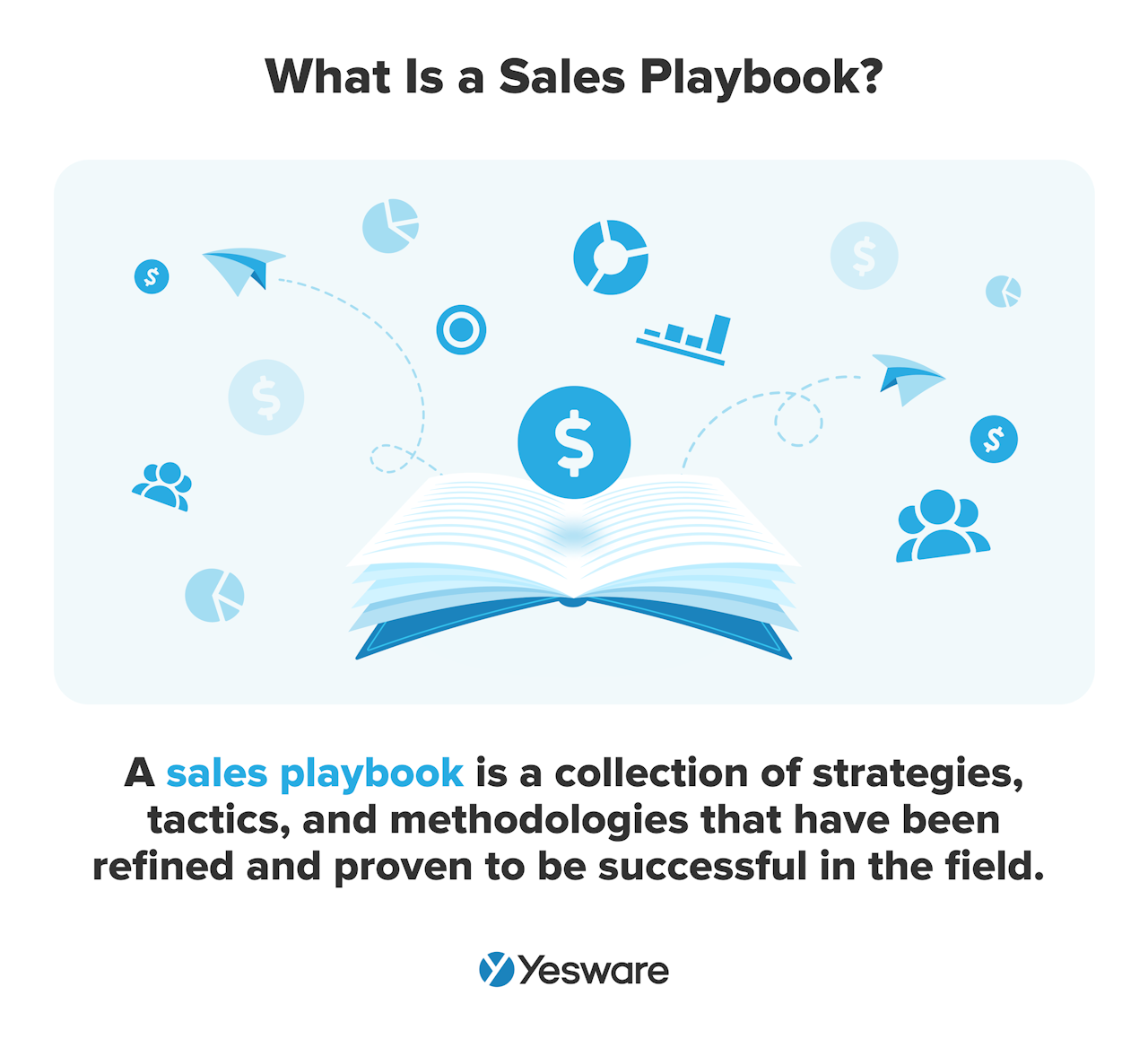How to Create a Winning Sales Playbook [Examples & Templates]
Casey O'Connor
Contents
A sales playbook is a document that outlines specifically what a rep should do, say, or demonstrate during specific parts of the sales process.
An effective sales playbook can help maximize your sales efficiency and improve your company’s growth rate.
In this article, we’ll go over the ins and outs of an effective sales playbook, as well as how to create one with your own team.
Here’s what we’ll cover:
- What Is a Sales Playbook?
- Why Sales Playbooks Are Beneficial
- What to Include in Your Sales Playbook
- How to Organize Your Sales Playbook
- Who Should Help Create the Playbook
- Types of Sales Plays to Include in Your Playbook
- Sales Playbook Examples
- Sales Playbook Template
What Is a Sales Playbook?
A sales playbook is much like a playbook for football or basketball; it’s a collection of strategies, tactics, and methodologies that have been refined and proven to be successful in the field.
A good sales playbook is designed to help sales reps adapt to a variety of sales situations. It can include high-level guidelines, such as an overview of your chosen sales methodology, as well as specific, step-by-step plays or scripts.
Companies that take the time to organize and streamline their best practices find huge benefits, including a 15% higher average growth rate. In fact, in a recent Yesware sales team collaboration study, we found that sales teams who share best practices grow 2.5x more than those who don’t.
Next, let’s take a look at some of the other benefits you might gain from creating a playbook.
Why Sales Playbooks Are Beneficial
Although it might seem tedious to gather, organize, and publish all of the various actions your sales team takes throughout the sales process, the effort is well worth it.
A well-executed sales playbook can be transformative for your team and can give salespeople the tools and confidence they need to drastically improve their individual and collective performance.
Better Onboarding
An effective sales playbook is a hugely useful tool for onboarding new reps. With all of your company’s unique sales tactics and approaches collected in one place, new hires can easily ramp up to optimal productivity in very little time.
A great onboarding process also creates a strong sense of commitment and connectedness, making new hires much more likely to stay on for the long haul.
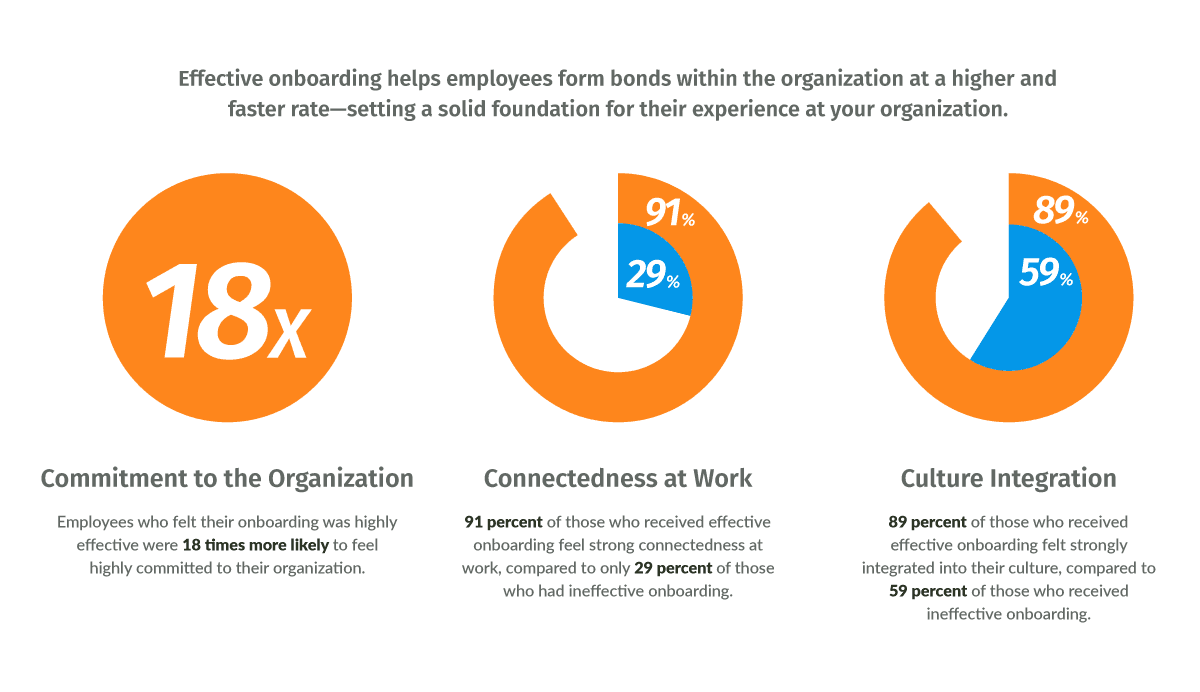 Not only does the playbook allow for standardized onboarding, it also makes the process relatively autonomous.
Not only does the playbook allow for standardized onboarding, it also makes the process relatively autonomous.
Playbooks eliminate the need for rep-shadowing, which sucks resources from many team members and is known to increase transfer and utilization of subpar sales strategies.
Improved Productivity
Implementing a standard sales routine can save your sales org a ton of time and boost sales productivity.
With today’s sales reps only affording 36% of their time for revenue-generating sales activities, it’s critically important that the sales process is as streamlined and automated as possible.
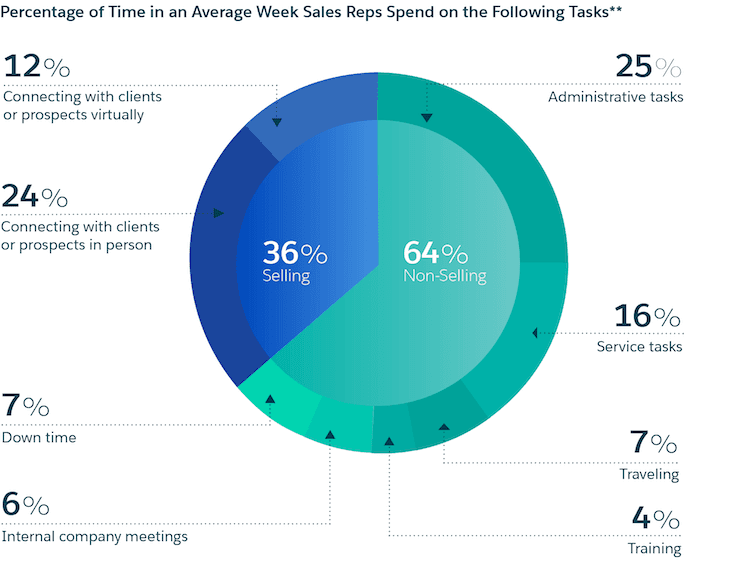
With a sales playbook, salespeople have quick and easy access to the tools that will help them be most successful. The playbook eliminates any wondering around what strategy or pitch will work best, or which content to use during which stage of the sales process.
Having these tools readily available allows salespeople to focus on what matters most: building a trusting relationship with the prospect.
Standardized, Repeatable, and Scalable Best Practices
Just like a football team, a sales team should study and standardize their most effective plays.
Whether it’s a specific phrase that digs right into a customer’s pain point, the perfect way to capture your value proposition in an elevator pitch, or a stack of email scripts to speed up your outreach efforts, a “sales play” worthy of including in your playbook includes anything that helps reps successfully close a deal.
When you first start creating your playbook, you might cast a wide net and capture a variety of methods and strategies. Over time, it’s worth it to scrutinize and refine your plays until they’re optimized. The more you can fine-tune them, the easier they’ll be to repeat and scale.
What to Include in Your Sales Playbook
The content of a sales playbook will be unique to its specific company — what works for one company may not work for another.
That being said, there are a handful of key sections and important metrics that are universally important to include in any playbook. While some of the following may seem extraneous or like “background information,” keep in mind that the playbook will be used by new and experienced reps alike.
Your brand messaging, for example, might be common knowledge for long-term reps, but it’s worth including this information for new hires. The following is a list of other things to consider including in any sales playbook.
Company Overview
Your company overview should include things like your company’s strategy, its mission and values, and a sales organization chart that outlines each person’s job title and responsibilities. 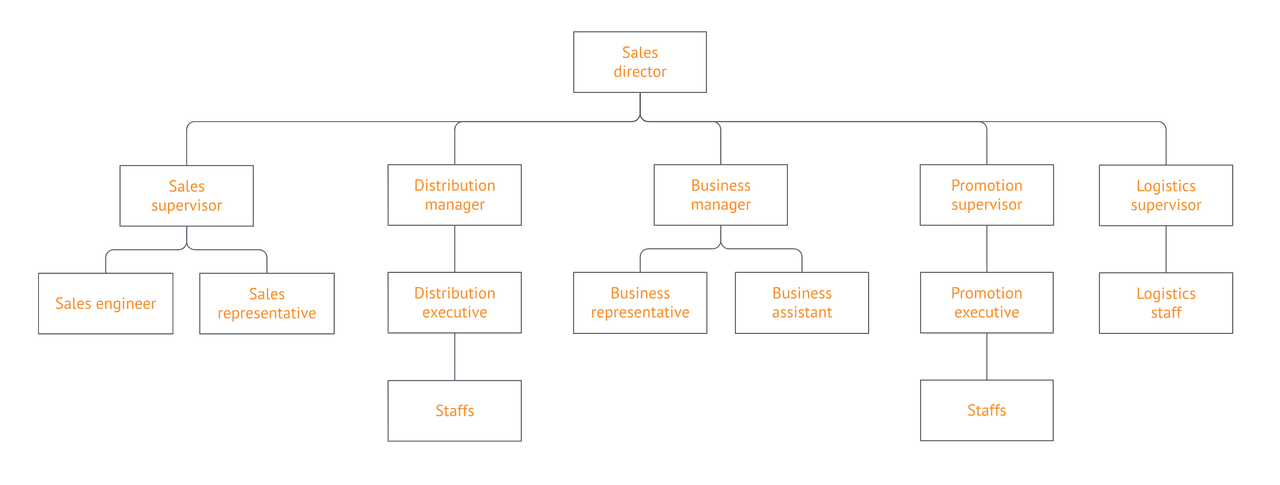
Here, you might also include information about standard team training that’s expected of all team members, as well as supplemental opportunities available to them.
Product/Service Overview
Salespeople need to know their product offer like the back of their hand. In this section of the playbook, be sure to include all pertinent information about your offer’s features and benefits, as well as details about pricing structure and deals.
Commission Structure
A well-designed commission and compensation plan can be highly motivating for sales reps. Sales managers should work to standardize these plans, if not already done, to provide transparency and incentivization across the team.
Sales Methodology
If your company leans on any specific sales methodologies, it’s important to include information on them within the playbook. If you find that consultative selling or value-based conversations work best, for example, be sure to include both a high-level overview of the strategy in the playbook, as well as specific tactics tied to that methodology.
Sales Process
While most sales processes look more or less the same, it’s still important to outline the specifics of your company’s best process. If, for example, you’ve done the work of creating a sales process map, the sales playbook is a great place to include it.
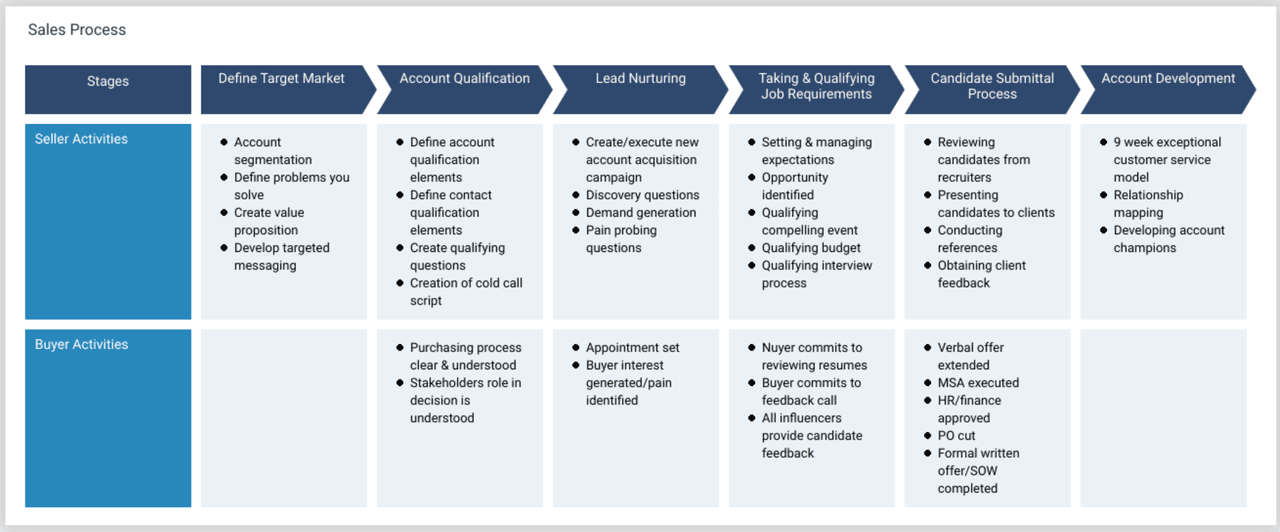
It’s also worth it to align your sales process with the buyer’s journey if you haven’t yet. The most effective sales teams are the ones who consider every action from the perspective of the customer, so it only makes sense to view the buying process from the other side of the equation.
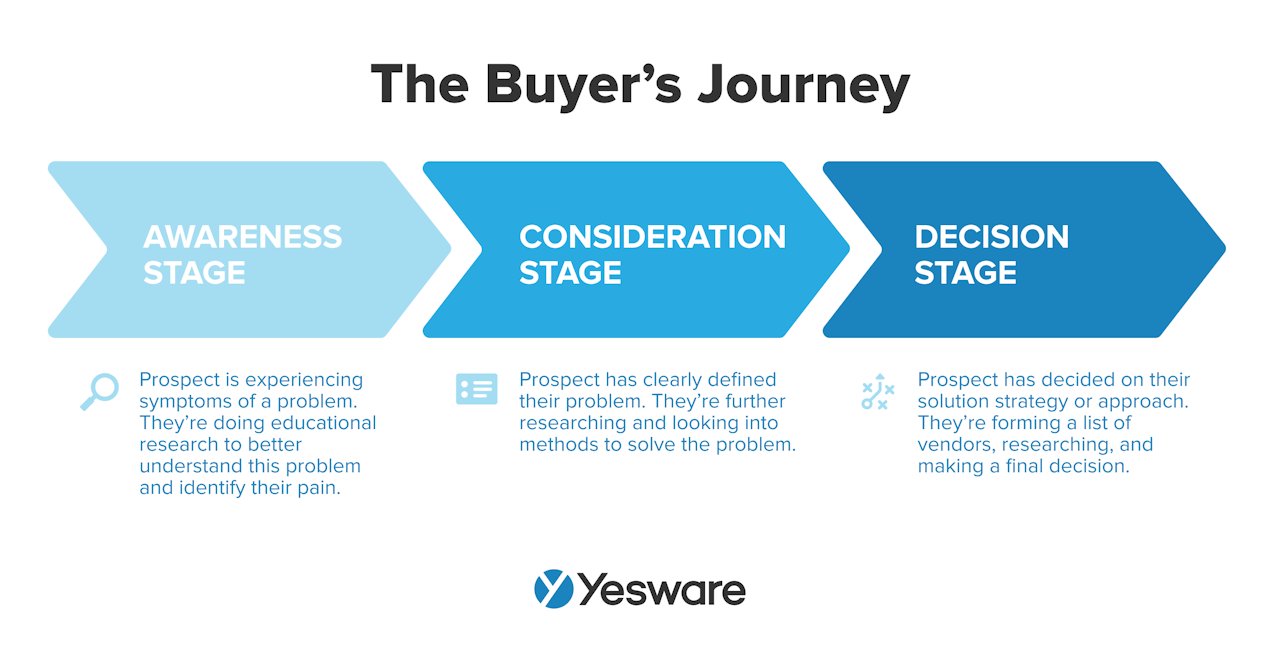
Current KPIs and Goals
Again along the lines of transparency and motivation, it’s crucial that you include your company’s short- and long-term goals within your playbook. Goals are standardized (and most easily achievable) when they’re created using the SMART sales goal framework.
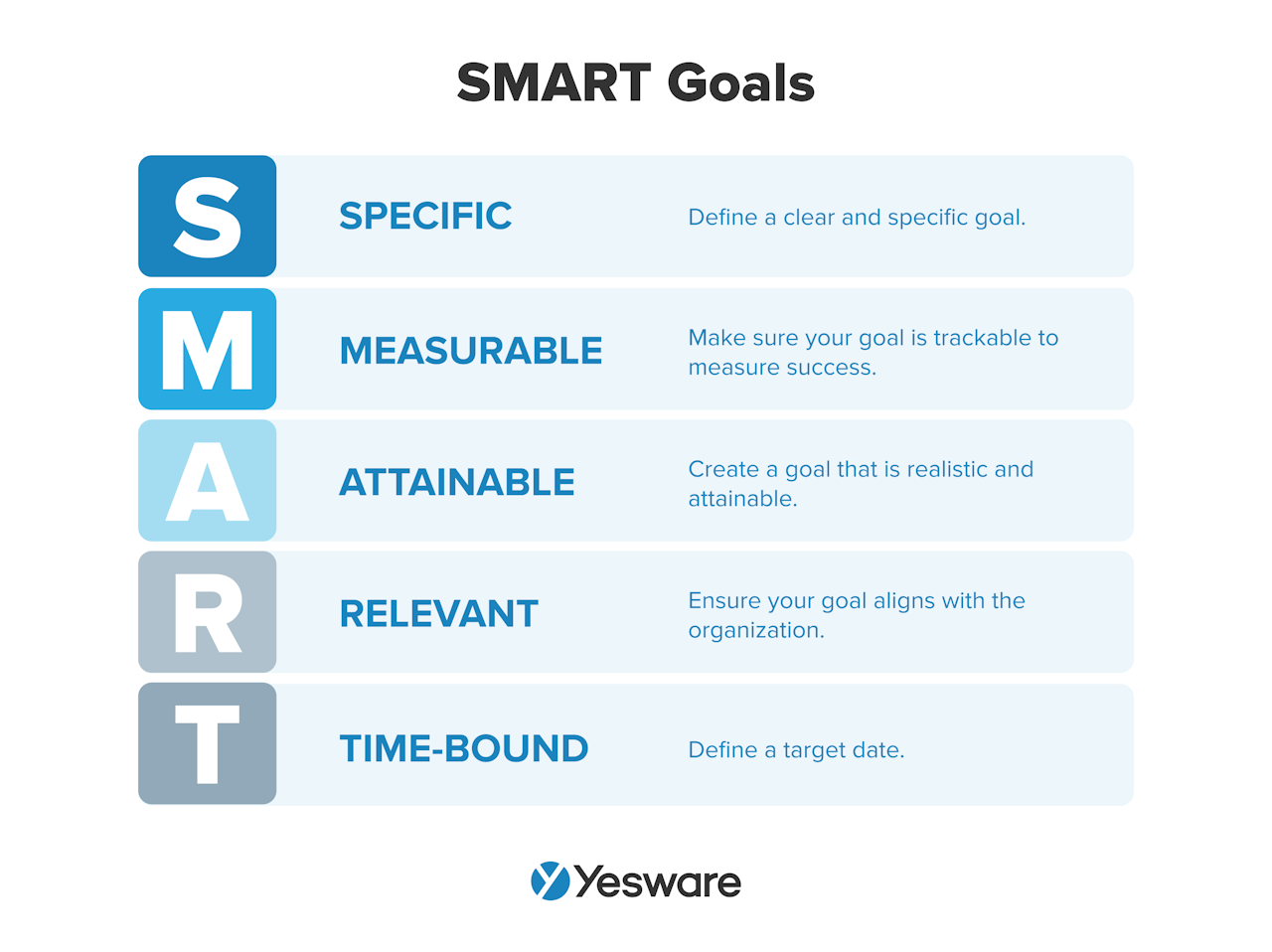
By that same token, you’ll also want to include a snapshot of your team’s current performance. You may not update your playbook on a weekly or even monthly basis, but a high-level look at where the metrics roughly stand at a given point in time will help to keep everyone on the same page as you work toward goals. Be sure to update this section at least quarterly.
Buyer Personas
Every great sales playbook needs to include ample information about the various buyer personas your team will encounter. 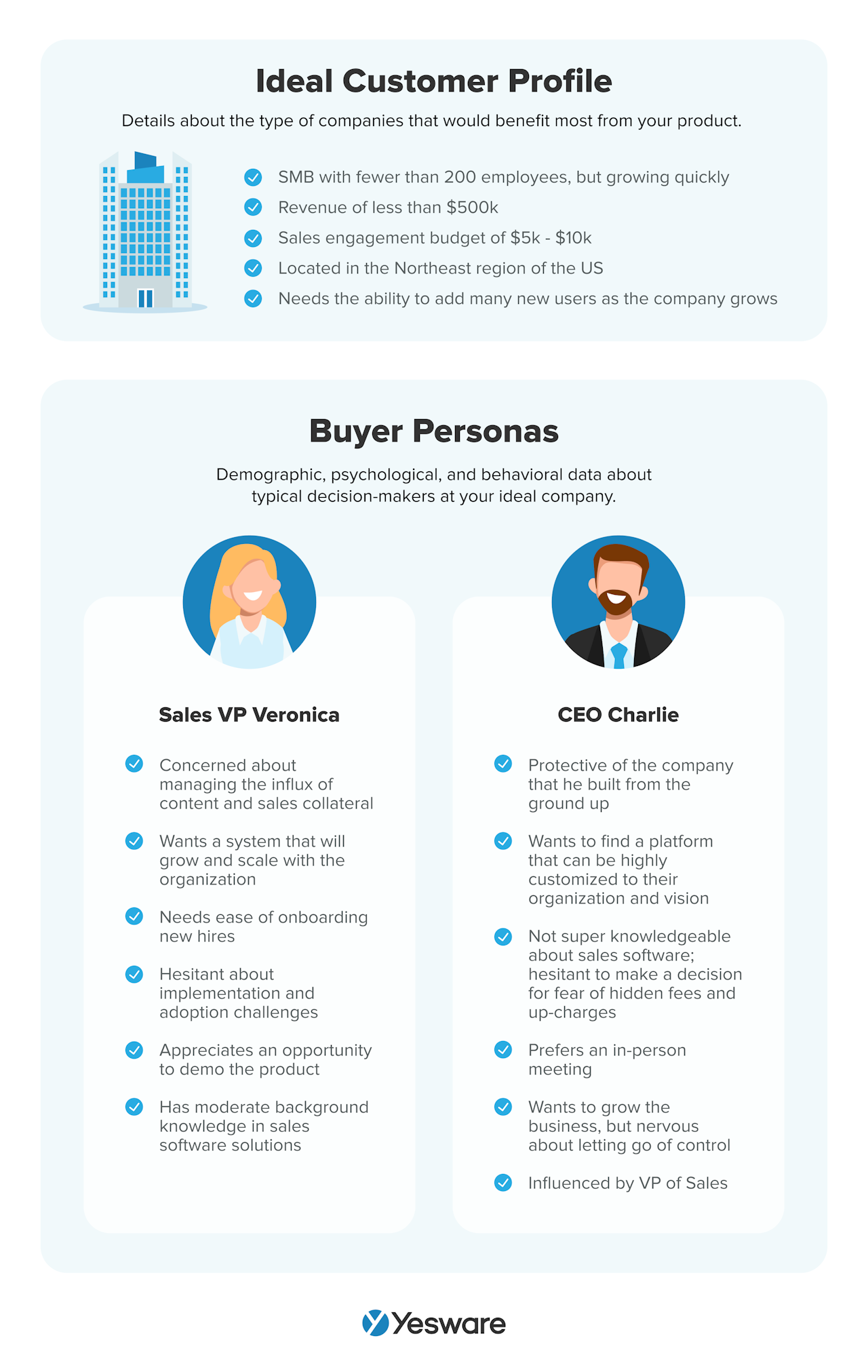 Access to details like these will help steer sales reps toward more productive and nurturing conversations with qualified leads. Here, you might also include effective conversation starters and angles for overcoming objections.
Access to details like these will help steer sales reps toward more productive and nurturing conversations with qualified leads. Here, you might also include effective conversation starters and angles for overcoming objections.
Resources & Sales Enablement
Among the “nitty-gritty” parts of your sales playbook will be specific resources, content, lists, and scripts to use throughout the sales cycle. This might include things like proven discovery questions, cold call scripts, demo run-throughs, or negotiation tactics.
These sections will provide actionable insights on day-to-day sales activities, and which sales tools to use at which stages. If you have a sales enablement team, they should be involved in creating this section.
Time Management/Cadence
You may also consider including tips or strategies for effective time management or which sales cadences work best for your particular product or buyer. Every sales rep will have their own individual working style, but having these kinds of benchmarks can be helpful in measuring how one’s productivity stacks up against their team’s.
Specific Sales Plays
If your team has managed to identify a very targeted, specific set of actions that have been proven to work on your ideal customer, include them in the playbook.
This might mean information about how many sales calls to make in a day, how many follow-ups are required before abandoning a lead, or exactly when to move a prospect into negotiation — anything specific that lays out what a rep needs to do from A to Z.
If your sales playbook is your manual, think of a sales play as a specific tutorial within that manual.
How to Create Your Sales Playbook
The following steps will help you create a successful and scalable sales playbook for just about any sales scenario. 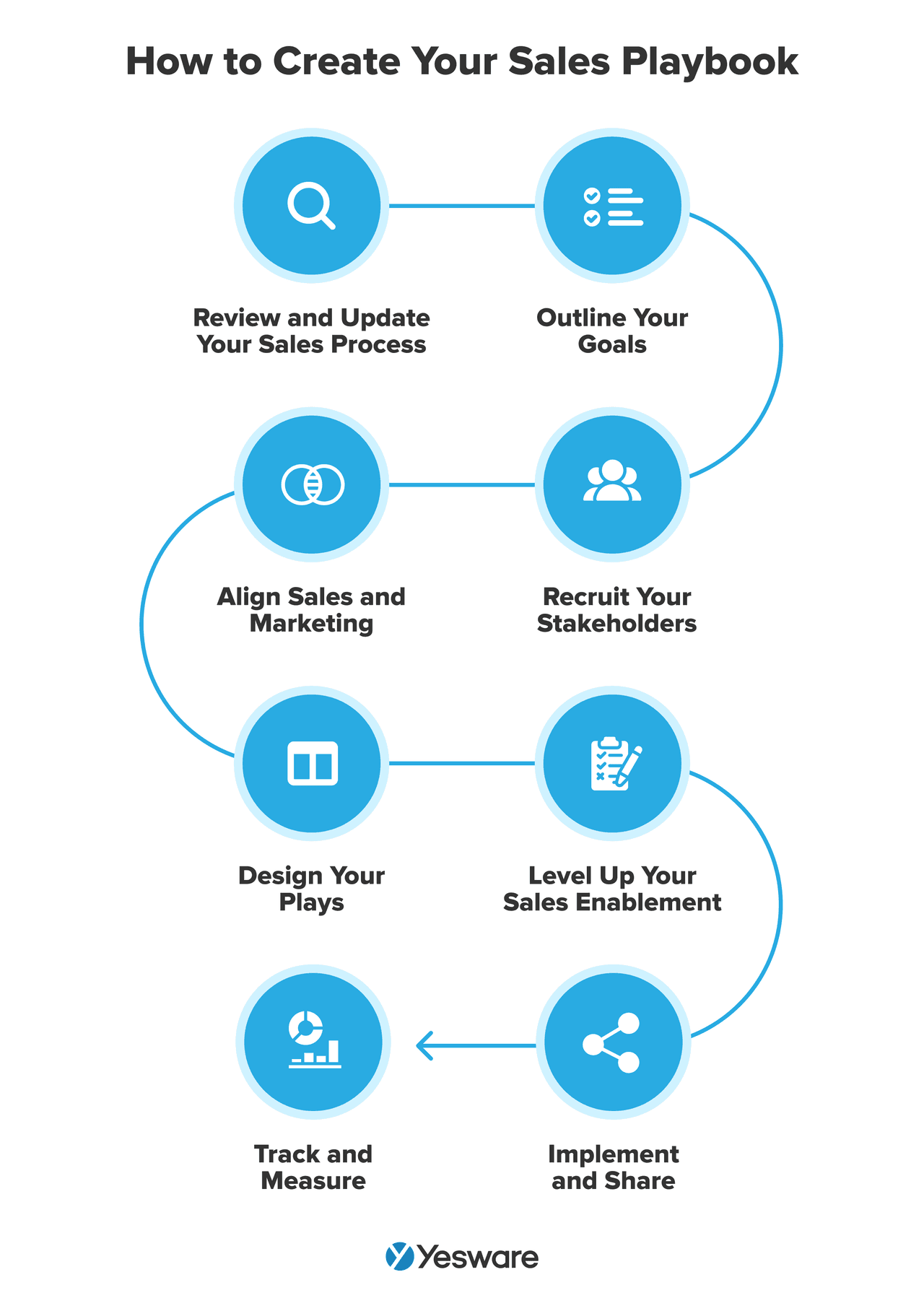
1. Review and Update Your Sales Process
The first step in creating a sales playbook is to review what you currently have in place for your sales process. The playbook is a subset of the process, so you need to have an idea of where the plays will fit into the overall sales funnel.
Look for areas where your sales process is visibly smooth and successful, and try to replicate those factors when creating your plays. Sales reps can provide a wealth of knowledge about the day-to-day effectiveness of the current sales process, so be sure to get their feedback.
Spend time with marketing to define clearly where each stage of the process begins and ends, including specific actions or decisions, so sales reps know where exactly to use each play. You’ll also want to assign specific content for each stage.
2. Outline Your Goals
The next step is to figure out what you want your sales playbook to achieve.
What parts of the sales process need specific plays? What areas of the sales process are challenging that can potentially be assisted with the use of a sales playbook? Think about the needs of your unique team and sales process and create specific goals around them. The SMART goal framework can be particularly helpful for this step.
3. Recruit Your Stakeholders
Once you know what you’ll target with your sales playbook, it’s time to identify the go-to-market players who will be involved in creating and/or using the plays.
There are several individuals and teams that need to be included in the sales playbook creation process (or, at least be included on the distribution list once it’s complete).
- Sales reps, sales development representatives (SDRs), sales managers, and VPs
- Marketing team
- Other directly responsible individuals (DRIs) in the sales process
- Subject matter experts
- C-suite executives
You may also consider including customer success in creating your playbook. They can offer valuable insight into what happy customers love about the product or service so that you can highlight those features and benefits in your sales plays.
4. Align Sales and Marketing
The teams that make the most sense to include in creating the sales playbook will ultimately be unique to your specific organization. But regardless of who all you include in the process, the sales and marketing teams need to be unequivocally aligned.
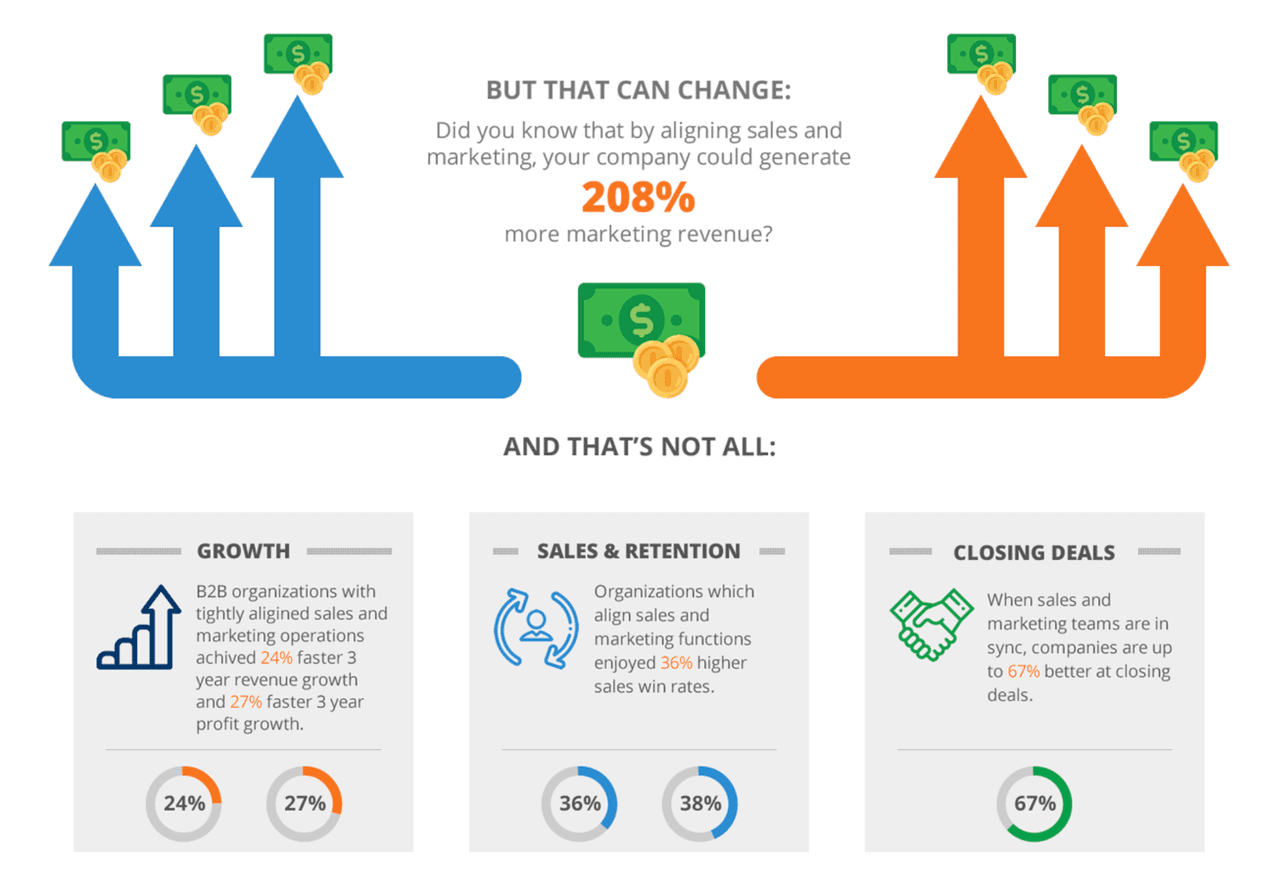
Take the time to collaborate with the marketing department to really develop your sales ICP and buyer persona details. The purpose of a sales playbook is to meet leads exactly where they are with exactly what they need; the ICP and buyer personas will help your sales playbook team create targeted, personalized sales plays.
5. Design Your Plays
The foundation of your sales playbook is now complete, and it’s time to start designing specific plays to complement the sales process.
The specific plays you design will depend on which parts of the sales process currently need the most attention, the strengths of your sales team, the needs and wants of your buyer personas, and your overarching sales goals.
6. Level Up Your Sales Enablement
When the plays are written, the playbook itself is complete — now it’s time to take it to the field. Before you do that, though, it’s imperative to ensure that anyone who’s using plays in a customer-facing scenario is extremely well-versed in how to approach each sale. In other words, you need to create a strong sales enablement program.
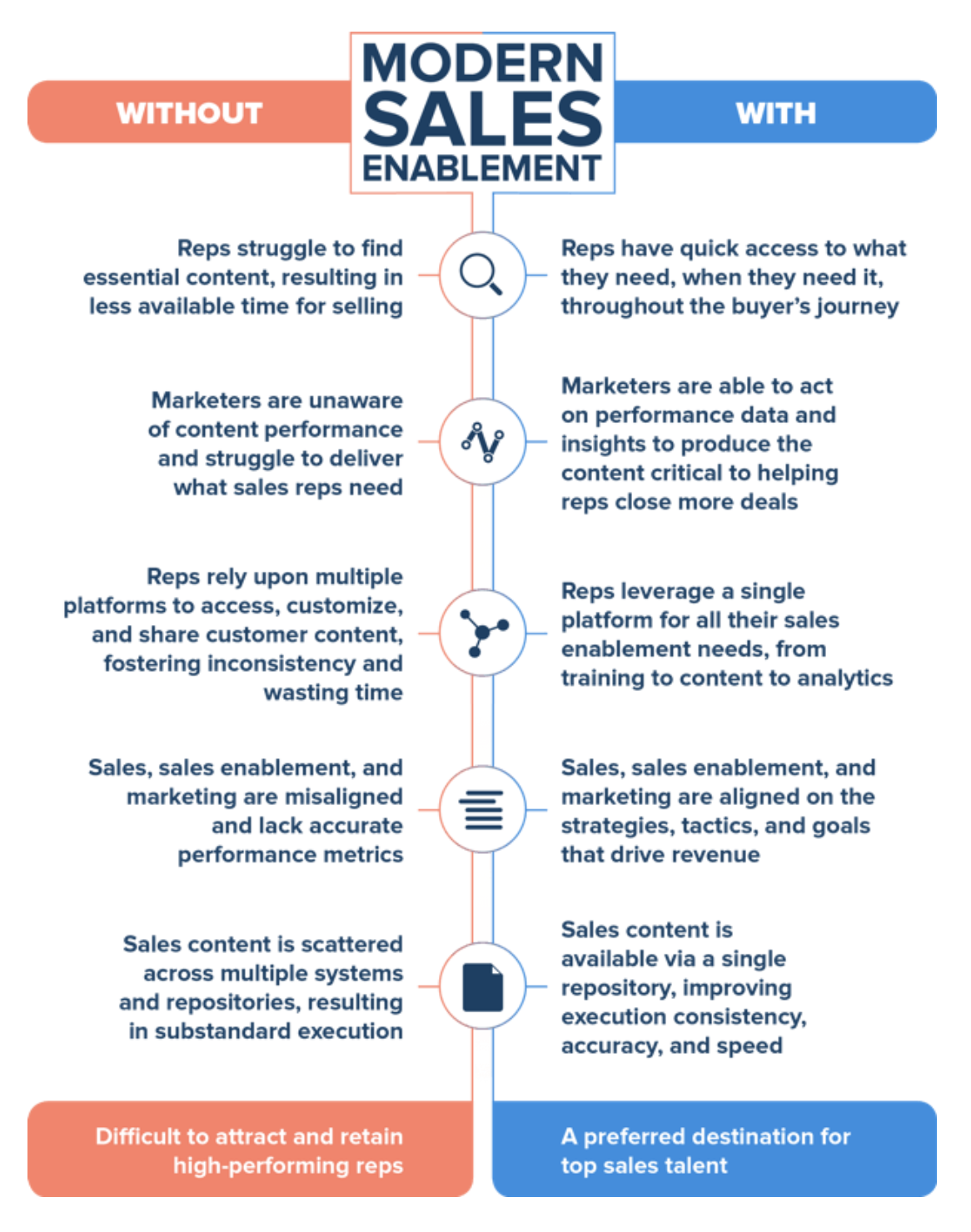
Sales enablement equips sales reps with all the content and training they need to be as successful as possible. A sales enablement software platform will also give any DRIs on-demand access to the sales tools they need.
7. Implement and Share
The hard work is done, and it’s time to execute the plays. Distribute the playbook to everyone on the sales team, plus any other stakeholders and DRIs.
Remember that people learn in all different ways, so it might be helpful to include both an online and a paper version. You’ll also want to make sure your reps are trained in any sales enablement platform you’re planning to use.
8. Track and Measure
Just like everything else in sales, the sales playbook needs to be tracked and measured — after all, what gets measured, gets managed.
A sales playbook cannot become fully effective and optimized until your sales team takes stock of how well it works. Make sure you create clear standards around data collection — when and how to collect it, where to store it, and how and when to analyze it.
Tip: Grab tons of data-backed findings to enhance your sales playbook.
 Sales Engagement Data Trends from 3+ Million Sales ActivitiesLooking at millions of tracked email activity over the past few years, this ebook is filled with our top studies and findings to help sales teams accelerate results.
Sales Engagement Data Trends from 3+ Million Sales ActivitiesLooking at millions of tracked email activity over the past few years, this ebook is filled with our top studies and findings to help sales teams accelerate results.
How to Organize Your Sales Playbook
Much like the content of the playbook, the document’s organization will also be highly specific to your company.
One company, for example, may find it most beneficial to organize their playbook based on each stage of the pipeline. Another team might need the plays arranged based on buyer persona, and another might need it structured based on different product offerings. Yet another might arrange their playbook based on the various territories they serve.
In order to find the organizational structure that best suits your needs, start by looking at your current sales process and the goals you’re hoping to achieve. These will help you identify the things most important to your team, which should help steer some of your decision-making around how to organize the document.
Who Should Help Create the Playbook
The creation of the sales playbook should be a combined effort among a variety of people in your company. Despite its name, it is not intended to be created or used solely by sales. The following team members should have involvement in creation of the sales playbook:
- Sales reps
- Sales managers, directors, or VPs
- Marketers, especially content marketing specialists
- The executive suite (to ensure alignment with company goals)
Some teams also have success in consulting with subject matter experts for content creation and training manuals.
Types of Sales Plays to Include in Your Playbook
Depending on how you choose to organize your playbook, you might consider including specific plays for any of the following components of the selling process.
Prospecting
If you’re looking to generate more business opportunities, try turning your focus to the prospecting stage. Your prospecting playbook might include outbound call scripts, prospecting email templates, or one-sheet training on how to get the most out of your CRM.
Lead Qualification
Along the lines of prospecting, you can also include sales plays around how to identify and effectively connect with your most promising leads. Plays might include targeted prospect research strategies, or conversation starters that will quickly weed out unqualified prospects.
Personalized Content
Personalized content plays teach reps how to reach each individual buyer on a personalized but repeatable scale. This may mean that you assign specific pieces of content to specific buyer personas; it can also include training and best practices around social selling.
Demo/Use Case Tactics
These kinds of plays will help reps demonstrate their product’s value proposition in real-world scenarios. Plays might include a step-by-step playback of what to say and when during a demo, or could include a handful of shareable case studies to share with prospects.
Closing Strategies
Here, you might include some scripts for ways to segue into closing without sounding too pushy. You could also outline specific negotiation techniques, or powerful ways to overcome the most common sales objections.
Sales Playbook Examples
Here are a couple of effective sales playbook templates we found across the web.
Sales Meeting Playbook
This sales meeting playbook lays out the exact process and actionable steps a rep should take before and during a sales meeting. It includes both high-level information, like the overall goals of the meeting, as well as minute details like how to craft and communicate the agenda.
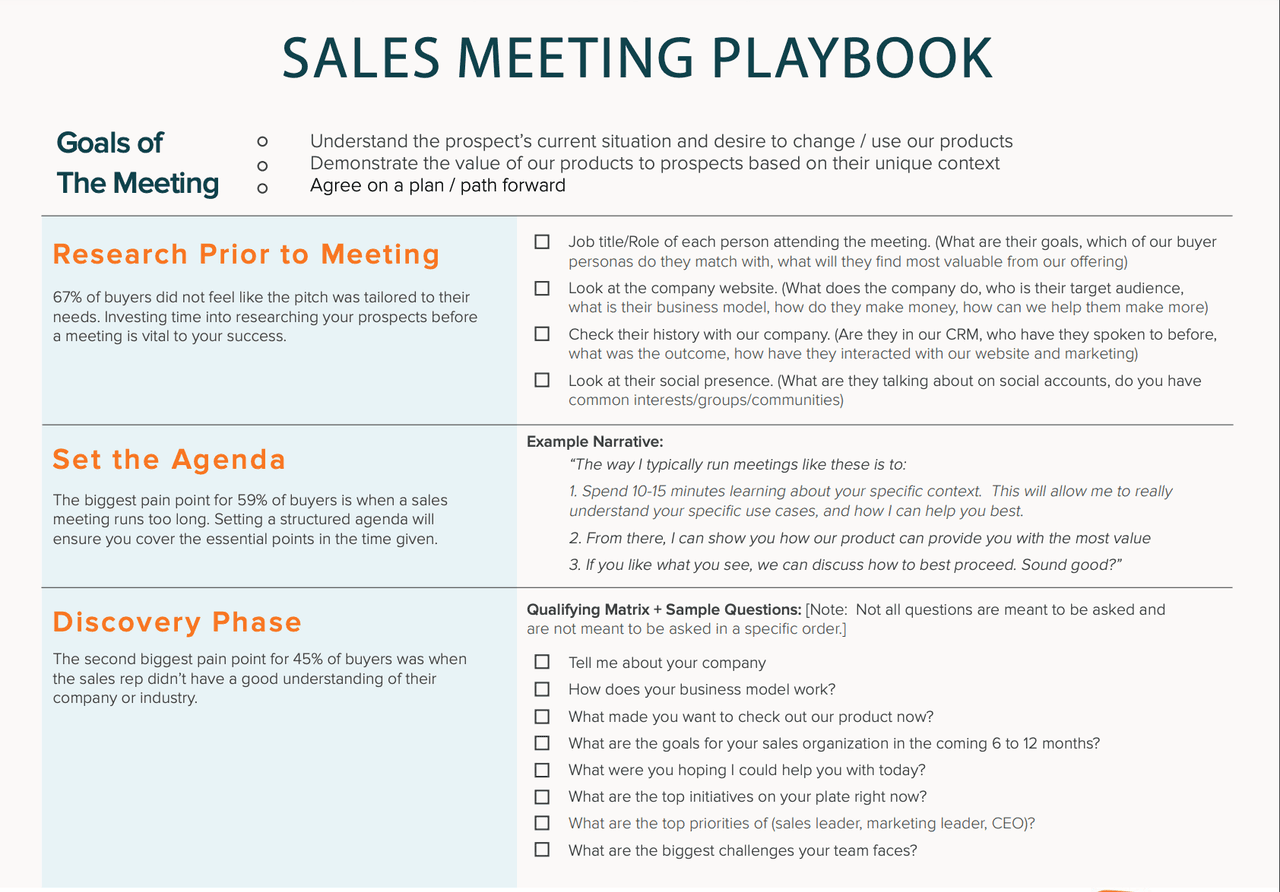
Cold Email Playbook
Cold emails are a bit less intimidating than cold calls, but sales reps can still benefit from a playbook of field-tested cold email formulas that are proven to generate leads and drive engagement. Yesware’s cold email formula playbook outlines a framework for each formula, as well as a real-world example.
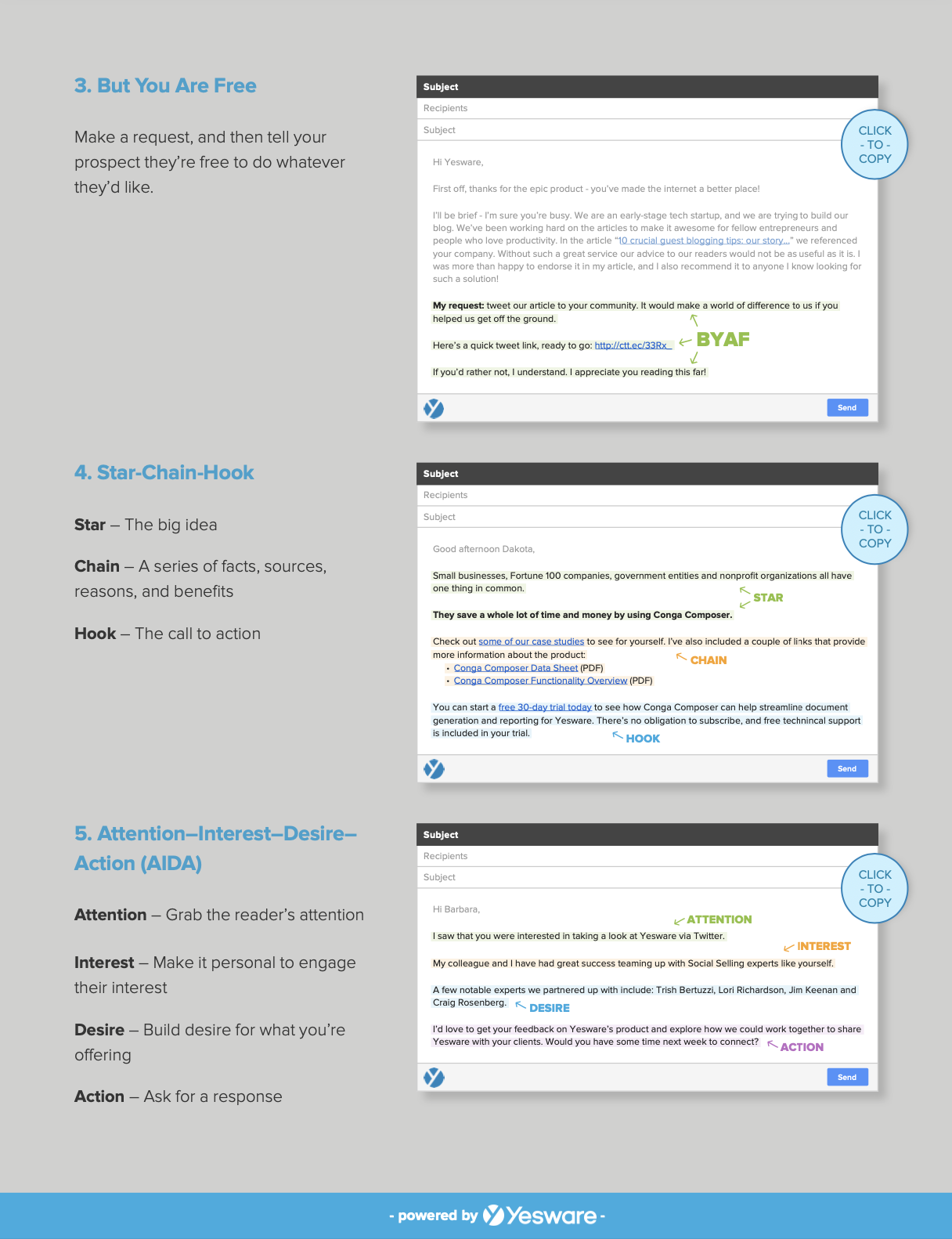
Elevator Pitch Playbook
The following Cobalt Iron playbook outlines the perfect elevator pitch from A to Z. The full playbook (linked in header) describes the most common objections and exactly what to say when they come up, as well as intel on the competition.
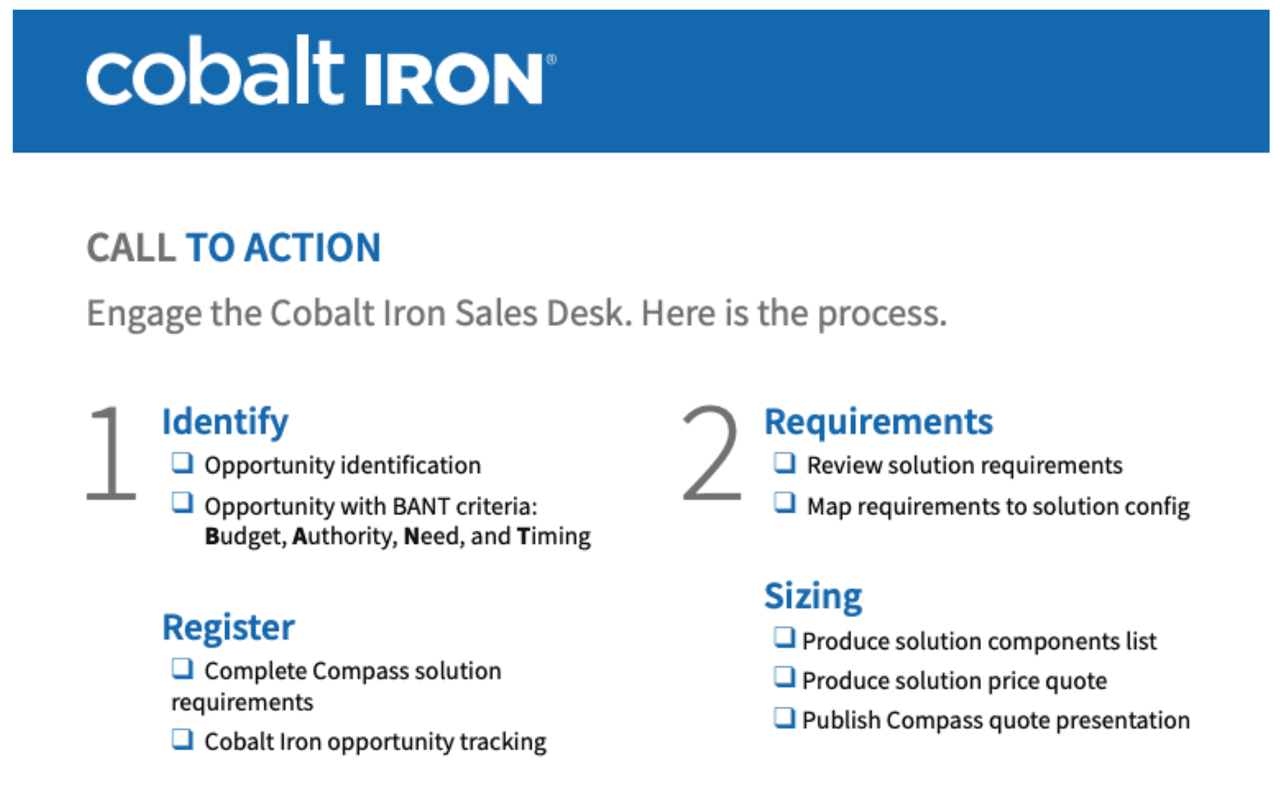
Sales Playbook Template
Here’s a customizable sales playbook template that walks through your sales plan. This template covers all the essential elements and can be customized further as your playbook develops. 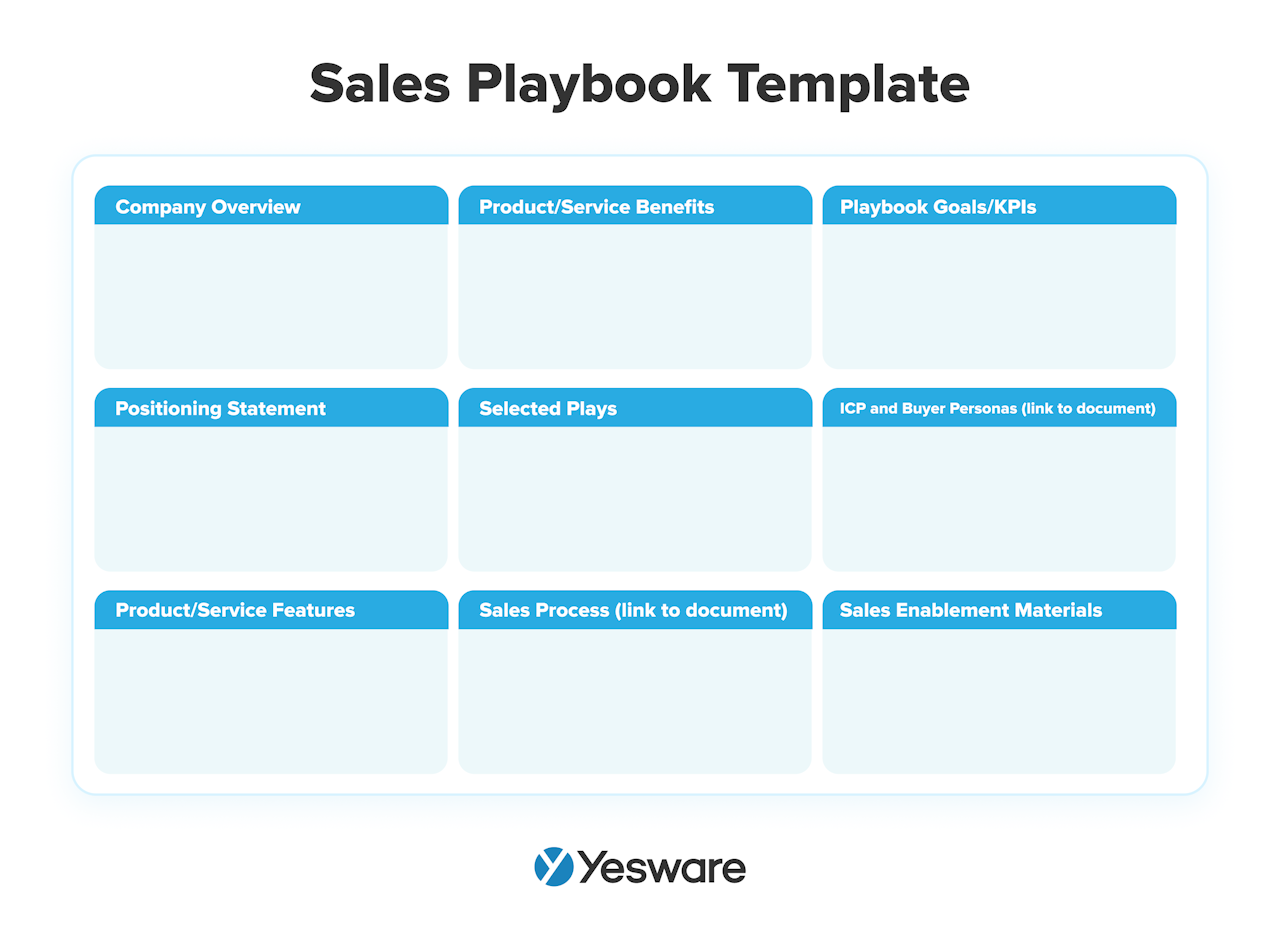 All-in-all, sales playbooks can be a game-changer for companies who are looking to level up their performance. Try leveraging the steps, tips, and templates laid out in this article to get started on your own.
All-in-all, sales playbooks can be a game-changer for companies who are looking to level up their performance. Try leveraging the steps, tips, and templates laid out in this article to get started on your own.
This guide was updated on August 2nd, 2023.
Get sales tips and strategies delivered straight to your inbox.
Yesware will help you generate more sales right from your inbox. Try our Outlook add-on or Gmail Chrome extension for free, forever!
Related Articles
Casey O'Connor
Casey O'Connor
Casey O'Connor
Sales, deal management, and communication tips for your inbox
![How to Create a Winning Sales Playbook [Examples & Templates]](/blog/_next/image/?url=https%3A%2F%2Fwww.yesware.com%2Fwp-content%2Fuploads%2F2021%2F06%2Fyesware-sales-playbook.jpg&w=1984&q=75)
